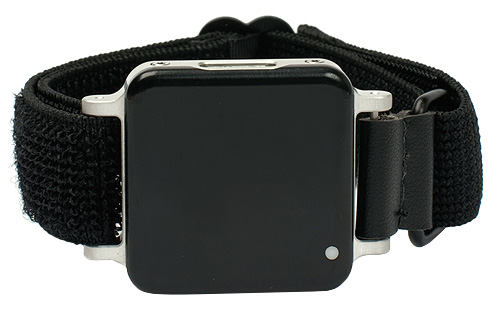 Measuring the severity of Parkinson’s disease is difficult, which leaves doctors adjusting medications by “eyeballing” symptoms. James McNames, professor of electrical and computer engineering at Portland State University, thinks a little more precision might help.
Measuring the severity of Parkinson’s disease is difficult, which leaves doctors adjusting medications by “eyeballing” symptoms. James McNames, professor of electrical and computer engineering at Portland State University, thinks a little more precision might help.
 Measuring the severity of Parkinson’s disease is difficult, which leaves doctors adjusting medications by “eyeballing” symptoms. James McNames, professor of electrical and computer engineering at Portland State University, thinks a little more precision might help. In 2006, McNames formed a team of engineers and created APDM, a company with the goal of designing unobtrusive, wearable movement sensors. The result is a watch-size movement monitor with a battery life of more than 16 hours and an internal storage capacity of 8 gigabytes; it wirelessly synchronizes itself and uploads data to a computer. The devices are sensitive enough to feel the rumble of trucks rolling by McNames’ office. Because the sensors record the smallest movements, analyzing the information they record is the key to success. People suffering from Parkinson’s wear the monitors to record their movements throughout the day. About 50 have been sold already, primarily to researchers, at a cost of $1,000 to $2,400 each. “You can figure out what their daily patterns are,” McNames says. This allows doctors to adjust the timing and dosage of medications on a case-by-case basis.
Measuring the severity of Parkinson’s disease is difficult, which leaves doctors adjusting medications by “eyeballing” symptoms. James McNames, professor of electrical and computer engineering at Portland State University, thinks a little more precision might help. In 2006, McNames formed a team of engineers and created APDM, a company with the goal of designing unobtrusive, wearable movement sensors. The result is a watch-size movement monitor with a battery life of more than 16 hours and an internal storage capacity of 8 gigabytes; it wirelessly synchronizes itself and uploads data to a computer. The devices are sensitive enough to feel the rumble of trucks rolling by McNames’ office. Because the sensors record the smallest movements, analyzing the information they record is the key to success. People suffering from Parkinson’s wear the monitors to record their movements throughout the day. About 50 have been sold already, primarily to researchers, at a cost of $1,000 to $2,400 each. “You can figure out what their daily patterns are,” McNames says. This allows doctors to adjust the timing and dosage of medications on a case-by-case basis.


